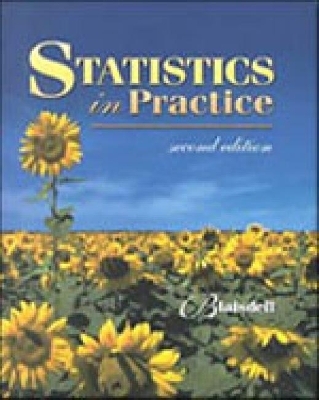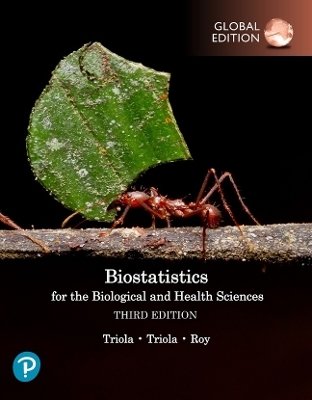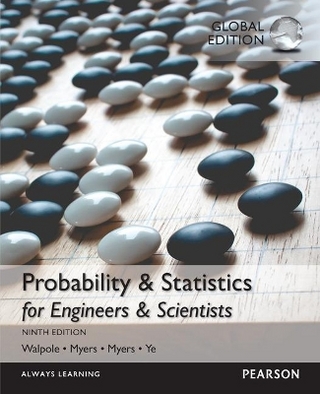
Statistics in Practice (with Windows 3.5 Data Disk)
Brooks/Cole
978-0-03-027114-4 (ISBN)
- Titel ist leider vergriffen;
keine Neuauflage - Artikel merken
This text explores the basic principles of probability and inferential statistics, illustrated with current data from general and scientific journals. Using applications and exercises from a wide variety of disciplines, Blaisdell guides students to develop an awareness and appreciation for the role of statistics in their environment.
Integration of MINITAB™ for Microsoft® Windows helps students analyze, evaluate, and comprehend statistical information, with each command explained at its first use in an application. Each set of commands is accompanied by a marginal box containing optional instructions for using menus and dialog boxes. Because not all students have access to MINITAB, it has been incorporated into the text in a manner that affords an instructor considerable flexibility concerning its usage in the course.
Volume 1.
Chapter 1: A First Look at Statistics and MINITAB
Why Study Statistics? What is Statistics? An Introduction to MINITAB.
Chapter 2: Describing Data: Graphical and Numerical Methods
Graphical Methods for Quantitative Data: Frequency Distributions and Histograms. Graphical Methods for Quantitative Data: Dotplots and Stem-and-Leaf Displays. Graphical Methods for Qualitative Data: Bar and Pie Charts. Numerical Measures of Central Location. Numerical Measures of Variability. Understanding the Significance of Standard Deviation. Measures of Relative Position.
Chapter 3: Modeling Bivariate Data: Describing the Relationship Between Two Variables
Straight Lines and the SS( ) Notation. Scatter Diagrams. Linear Regression and the Method of Least Squares. Correlation: Measuring the Usefulness of the Model.
Chapter 4: Probability: Measuring Uncertainty
Probability, Sample Spaces and Events. Basic Techniques for Counting Sample Points. The Addition Rule of Probability. The Multiplication and Conditional Rules of Probability. The Complement Rule of Probability. Combining the Rules of Probability.
Chapter 5: Random Variables and Discrete Probability
Random Variables. Discrete Probability Distributions. The Mean of a Discrete Random Variable. Measuring the Variability of a Random Variable.
Chapter 6: Special Discrete Probability Distributions
Binomial Experiments. The Binomial Probability Distribution. The Mean and the Standard Deviation of a Binomial Random Variable. The Hypergeometric Probability Distribution (Optional). The Poisson Probability Distribution (Optional).
Chapter 7: Normal Probability Distributions
Probability Distributions of Continuous Random Variables. Normal Probability Distributions. Applications of Normal Distributions. Using Normal Distributions to Approximate Binomial Distributions.
Chapter 8: Sampling Methods and Sampling Distributions
Random Sampling. Other Scientific Sampling Methods. Sampling Distributions. The Central Limit Theorem. Applications of the Central Limit Theorem.
Chapter 9: Estimating Means, Proportions and Variances: Single Sample
Basic Concepts of Estimating Population Parameters. Confidence Interval for a Mean: Large Sample
Student''''''''s Probability Distributions. Confidence Interval for a Mean: Small Sample. Confidence Interval for a Proportion: Large Sample. Determining the Required Sample Size. Chi-Square Probability Distributions
Confidence Interval for a Variance.
Chapter 10: Tests of Hypotheses: Single Sample
Basic Concepts of Testing Statistical Hypotheses. Hypothesis Test for a Mean: Large Sample. Hypothesis Test for a Mean: Small Sample. Hypothesis Test for a Proportion: Large Sample. Hypothesis Test for a Variance. Using p-Values to Report Test Results.
Chapter 11: Tests of Hypotheses and Estimation: Two Samples
Large-Sample Inferences for Two Means: Independent Samples. Small-Sample Inferences for Two Means: Independent Samples and Equal Variances. Small-Sample Inferences for Two Means: Independent Samples and Unequal Variances (Optional). Inferences for Two Means: Paired Samples. Large Sample Inferences for Two Proportions. Determining Required Sample Sizes. F Probability Distributions. Inferences for Two Variances.
Chapter 12: Chi-Square Tests for Analyzing Count Data
Count Data and the Chi-Square Statistic. Hypothesis Test for a Multinomial Experiment. Hypothesis Test for a Contingency Table. Hypothesis Test for Two or More Proportions.
Volume II.
Chapter 13: Analysis of Variance
The Analysis of Variance Technique. The Analysis of Variance Table and Computing Formulas. Applications of the One-Way Analysis of Variance. Estimation of Means. Randomized Block Designs and the Analysis of Variance.
Chapter 14: Linear Regression Analysis
The Simple Linear Model and Related Assumptions. Fitting the Model by the Method of Least Squares. Inferences for the Slope to Assess the Usefulness of the Model. The Coefficients of Correlation and Determination to Measure the Usefulness of the Model. Using the Model to Estimate and Predict
Conducting a Regression Analysis with MINITAB.
Chapter 15: Nonparametric Tests
The One-Sample Sign Test. The Two-Sample Sign Test: Paired Samples. The Mann-Whitney U-Test: Independent Samples. The Kruskal-Wallis H-Test for a Completely Randomized Design. The Friedman F-Test for a Randomized Block Design. The Runs Test for Randomness. Spearman''''''''s Rank Correlation Coefficient.
Chapter 16: Multiple Regression Models
Multiple Regression Models and Assumptions. R2 and the Global F-Test of a Model''''''''s Usefulness. Using Qualitative Variables in a Model. Interaction and Second-Order Models. Testing Portions of a Model. Using the Model to Estimate and Predict. Analyzing Residuals to Evaluate the Model. Other Considerations.
| Erscheint lt. Verlag | 14.11.1997 |
|---|---|
| Verlagsort | CA |
| Sprache | englisch |
| Maße | 195 x 238 mm |
| Gewicht | 1350 g |
| Themenwelt | Mathematik / Informatik ► Mathematik ► Statistik |
| ISBN-10 | 0-03-027114-2 / 0030271142 |
| ISBN-13 | 978-0-03-027114-4 / 9780030271144 |
| Zustand | Neuware |
| Haben Sie eine Frage zum Produkt? |
aus dem Bereich

